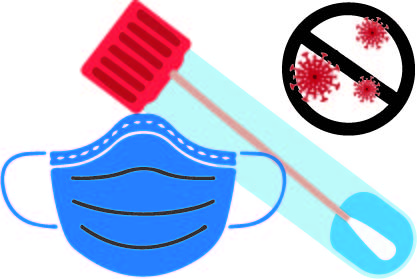The COVID-19 Vaccine: What to Know
COVID-19 vaccine’s efficacy, importance and distribution
According to the Lancet, “On March 11, 2020, WHO [World Health Organization] declared the SARS-CoV-2 [COVID-19] outbreak in China to be a pandemic.” Now, in 2021, Americans are still dealing with the COVID-19 pandemic, but finally, there are vaccines that can help protect people by preventing the disease. The CDC reports, as of March 22, 2021, 24.7% of Americans have received their first dose and 13.8% of the population has received their second dose of the vaccine. Although vaccines are now starting to be distributed, questions about the efficacy, the importance of getting the vaccine and distribution of the vaccine in Platteville may arise.
The New England Journal of Medicine found that, in a trial testing the mRNA-1273, also known as the Moderna vaccine, there were “30,420 volunteers who were randomly assigned in a 1:1 ratio to receive either vaccine or placebo.” In this trial, 185 participants in the unvaccinated placebo group were found to have symptomatic COVID-19 illness, while in the mRNA-1273 group only 11 participants were found to have symptomatic COVID-19 illness. These findings illustrate that the vaccine reduces the rate of symptomatic infections of COVID-19. This study shows there is a 94.1% efficacy rate of the vaccine after the second dose is administered; these findings also held true for the secondary analyses. Yale Medicine reports that the other vaccines currently available in the United States are the Pfizer vaccine that has a 95% efficacy rate and Johnson and Johnson that has a 72% overall efficacy rate. There are also vaccines that are not yet available in the United States, one of which is the Oxford-AstraZeneca. Overall, the Moderna vaccine can benefit the American population by helping prevent symptomatic COVID-19.
“Surveys assessing the share of Americans willing to get vaccinated against COVID-19 place estimates of intention to refuse vaccination between 25% and 50%,” stated Timothy Callaghan, who works for the Department of Health Policy and Management at Texas A&M University. This is a huge issue since herd immunity is vital to returning to normalcy.
“Really what we are trying to do with this vaccine is not to wait for everybody to be infected and get natural immunity or potentially die,” stated Dr. Ryan Haasl, a professor at UW-Platteville who has a Ph.D. in Genetics from UW-Madison. According to the World Health Organization, herd immunity is the protection from a disease because the population is widely immune to it from getting vaccinated or through previous infection. Herd immunity is extremely important because it keeps people safe by lowering the number of people who can get the disease, decreasing the spread and helping people who cannot get vaccinated. Currently the percentage needed to reach herd immunity is unknown. The more people who have the vaccine, the better the chances that the spread and death rates will lower.
“We (Grant County Health Department) are distributing vaccine(s) according to state guidance and coordinating with other vaccinators in our jurisdiction including hospitals, clinics and pharmacies,” stated Grant County Health Officer Jeff Kindrai. Currently, Grant County has been working hard to distribute the vaccine. Overall, the Wisconsin Department of Health reports that, as of March 22, 2021, 24.7% of the Grant County population have received the first dose and 17.6% have received their second dose. The Grant County Health Department has been using a variety of ways to distribute the vaccine such as going home-to-home and offering public clinics, closed points of distribution and in-office vaccination. All these techniques are important to getting back to the normalcy of day-to-day life.
“It’s a magical thing we have this vaccine so quickly. It gives us a fighting chance,” expressed Dr. Haasl. The vaccine with its high efficacy rate can help fight against the COVID-19 virus. It is a tool to help the population get back to normalcy.




